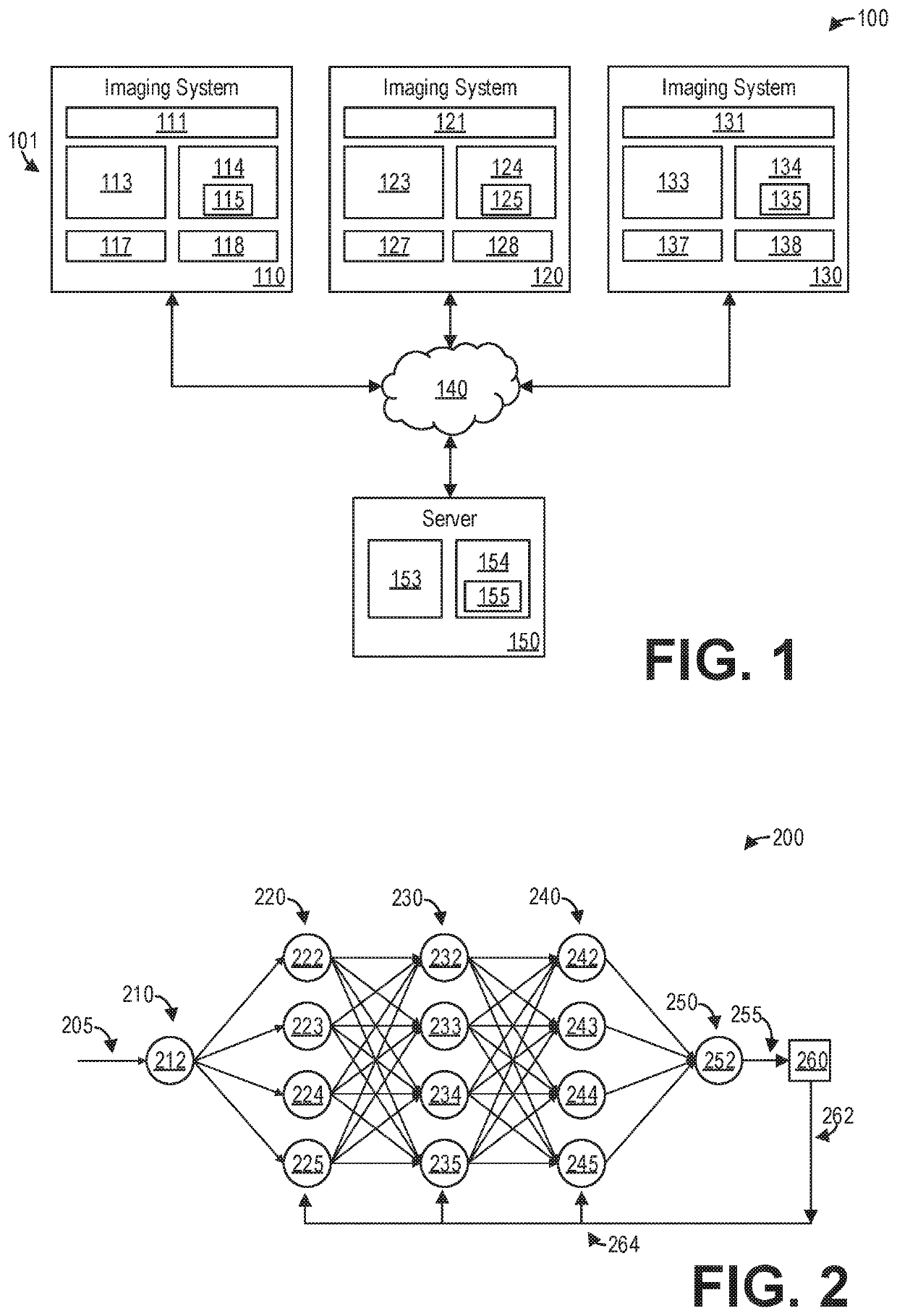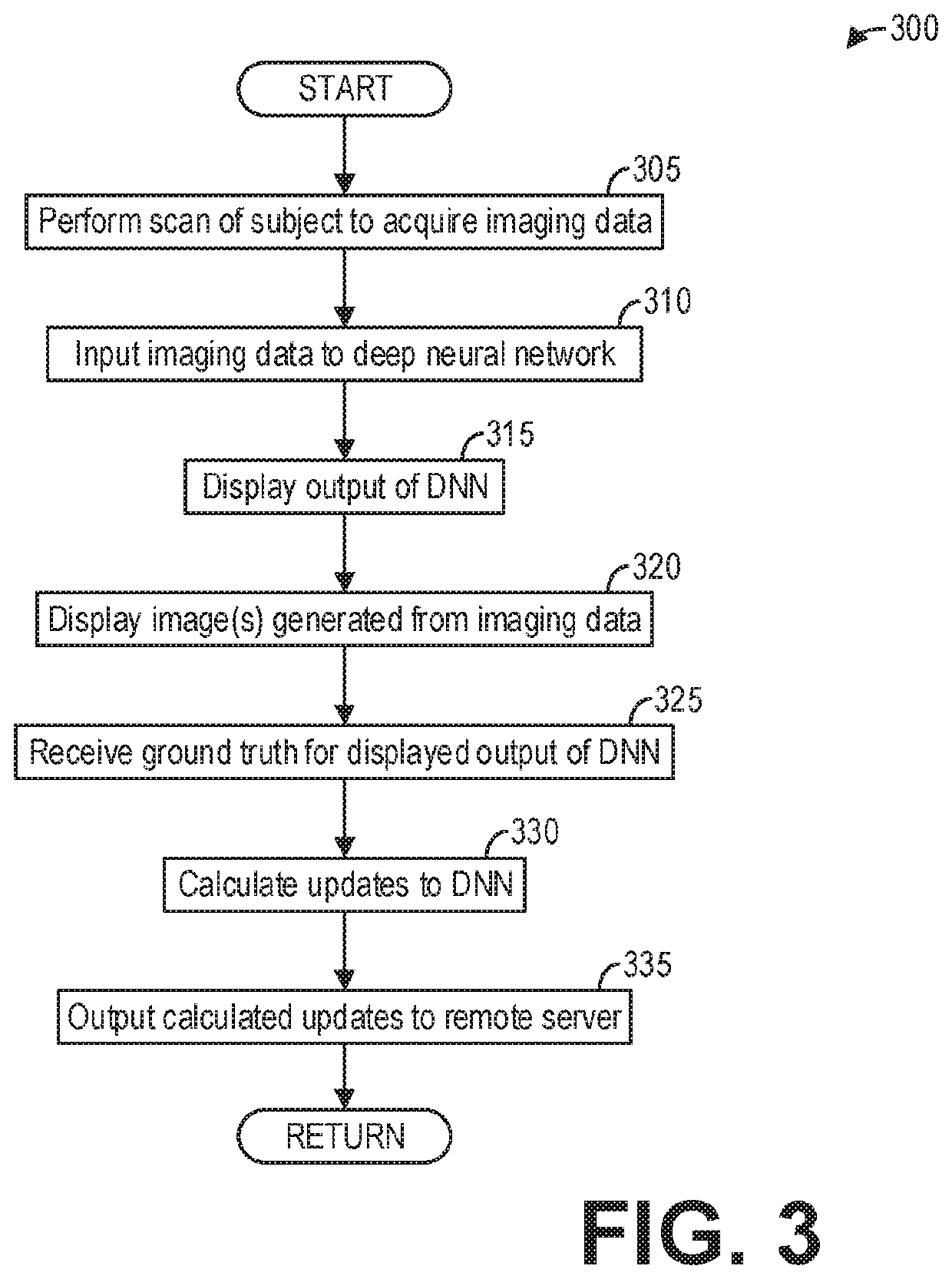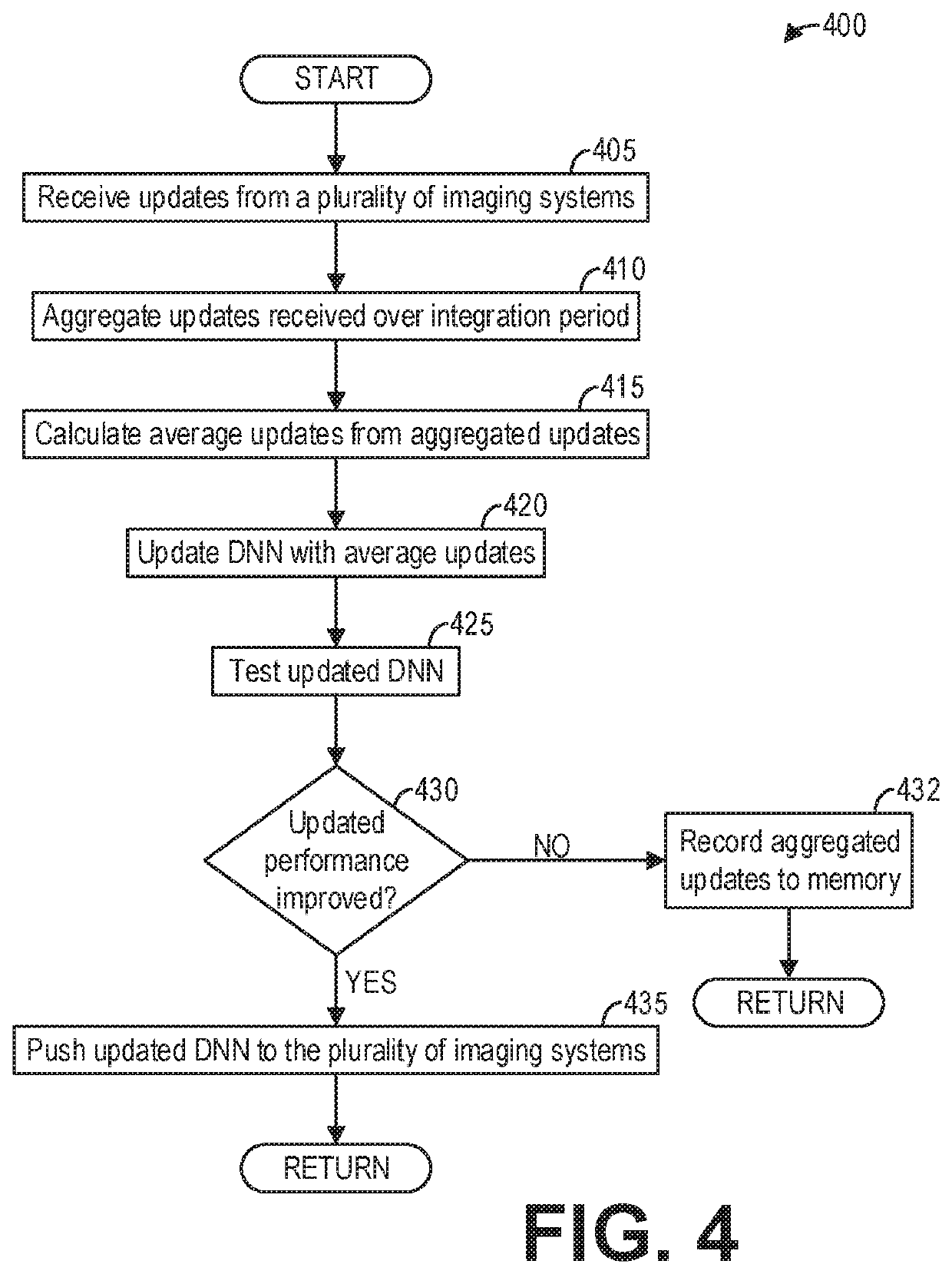Systems and methods for capturing deep learning training data from imaging systems
a deep learning and imaging system technology, applied in the field of non-invasive diagnostic imaging, can solve problems such as the difficulty of leveraging these improvements for other imaging systems, and achieve the effect of preserving patient privacy
- Summary
- Abstract
- Description
- Claims
- Application Information
AI Technical Summary
Benefits of technology
Problems solved by technology
Method used
Image
Examples
Embodiment Construction
[0013]The following description relates to various embodiments of non-invasive diagnostic imaging. In particular, systems and methods are provided for generating deep learning training data with an imaging system. An example system that may be used to generate and utilize deep learning training data is provided in FIG. 1. A deep neural network, such as the deep neural network depicted in FIG. 2, is trained on imaging data acquired by an imaging system. A method for an imaging system, such as the method depicted in FIG. 3, includes transmitting updates to the deep neural network of the imaging system to a central server for training a central deep neural network. A method for a central server, such as the method depicted in FIG. 4, includes aggregating and averaging such network updates received from a plurality of imaging systems and training a central deep neural network on the average updates. An example of a CT imaging system that may be used to acquire images processed in accord...
PUM
 Login to View More
Login to View More Abstract
Description
Claims
Application Information
 Login to View More
Login to View More - R&D
- Intellectual Property
- Life Sciences
- Materials
- Tech Scout
- Unparalleled Data Quality
- Higher Quality Content
- 60% Fewer Hallucinations
Browse by: Latest US Patents, China's latest patents, Technical Efficacy Thesaurus, Application Domain, Technology Topic, Popular Technical Reports.
© 2025 PatSnap. All rights reserved.Legal|Privacy policy|Modern Slavery Act Transparency Statement|Sitemap|About US| Contact US: help@patsnap.com



